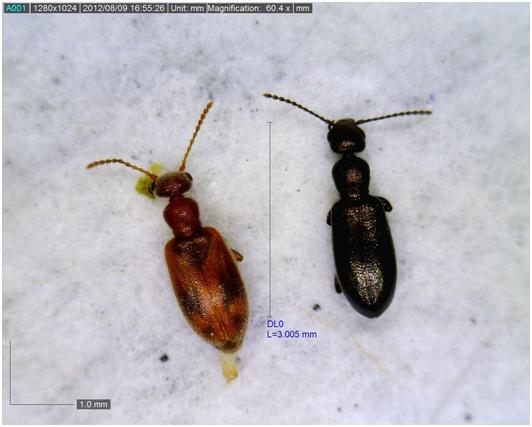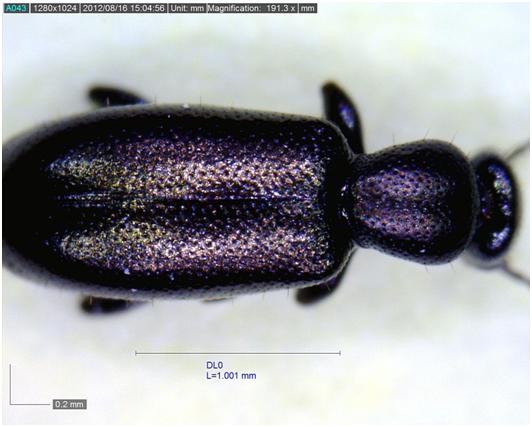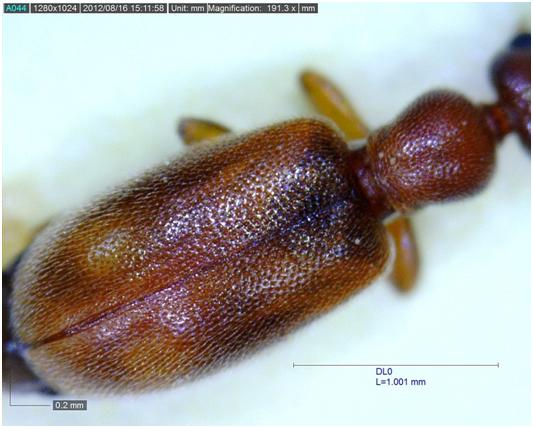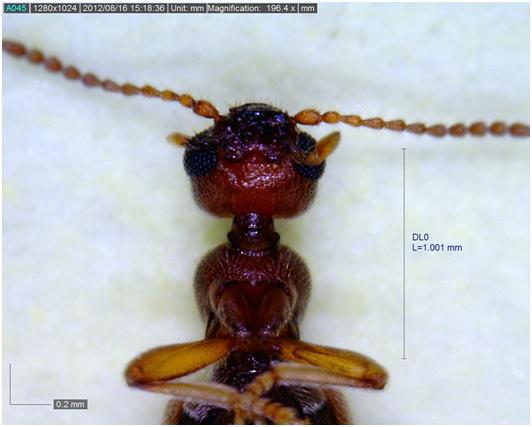 |
|
|
|

|
|||
| |
|||
Last week a cauliflower transplant tray was received from a local grower for pest and damage symptom diagnosis. After careful inspection, no damages from insects or pathogens were presented on the plants. The tray was placed outside in the shade for several hours to let the soil dry down for inspection of the soil and roots. Although no root damage was observed, tiny fast-moving beetles resembling ants were found in great numbers all over the tray. They had moved onto the trays from the surrounding habitat. Specimens were collected and images were sent to Dr. Margarethe Brummermann from University of Arizona Insect Collection (UAIC) who identified them as flower beetles in the family Anthicidae. The common name for these beetles is the “Ant-like flower beetle”. There are approximately 3,500 species of Anthicidae in the world, most of them live in tropical and subtropical regions. It is a large group but still poorly studied. During the last 15 years, more than 300 new species and several new genera were discovered and described worldwide. The role of ant-like flower beetles is not completely understood, they present in various habitats from high mountains to rainforest, and of course in the desert. They can be found around flowers, leaf litter, soil, rotten wood, or even tree canopy. In North America they are often brown or black with red or yellow markings that range in size from 1.5 to 2.0 mm in length. Both adults and larvae of ant-like flower beetles are omnivorous, known to consume small arthropods, eggs, pollen, fungi, or whatever they can find. Some groups of them are being used as a biological control agent as the role of egg predator on many agricultural pests. So if PCAs or growers encounter this type of beetle in the field, do not target sprays to control them. They may actually be providing some level of natural control of other soil pests in your crop system. If you encounter any beetles or other insects on the soil during stand establishment in your fall crops, don’t hesitate to collect a few and bring them in to us for identification. Also, to further examine we will be monitoring for soil dwelling insects, as well as other non-target beneficial insects on and around young plant stands, using black lights near the Yuma Agricultural Center this fall. Further reading: http://tolweb.org/Anthicidae/10323
Click picture to listen Click picture to listen to Ta-I To contact Ta-I Huang go to: thuang7030@email.arizona.edu
|
|||
| Back | |||
For questions or comments on any of the topics please contact Marco Pena at the Yuma Agricultural Center. |
|||
| Home | Cotton
| Veggies | Forages
| Grains | Citrus
| Crop x Crop Insects | Diseases| Weeds | Pesticides | Economics | News | Weather | Research | Photos | Contacts | General Info. Copyright © 2001 University of Arizona, College of Agriculture and Life Sciences Webmaster: Al Fournier (acis@ag.arizona.edu) |
|||




